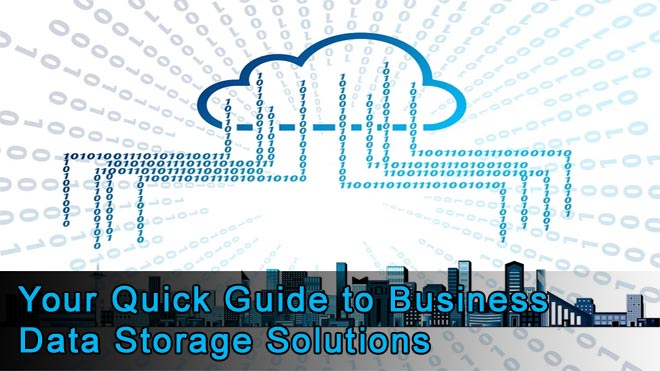Every organization generates tons of data from multiple sources, and that keeps growing over the lifetime. Not all of the data has to be stored but surely maintained in some way to ensure security and easy accessibility. This is where the concept of data storage comes into the picture where you use electromagnetic, optical, or other media to retain important information for the users.
All hard drives are destined to fail someday. But this doesn’t mean they fail at the same rate. The average life of a hard drive, at the time of writing this article, is around 6 years. While an early failure could be the manufacturer’s fault, however, in most cases it is because we don’t take care of them. Hard disk drives are sensitive devices and are prone to the effects of excessive wear and tear. Let’s look at the most common causes of physical failures and what you can do to prevent them.
You choose a data storage solution depending on what your business needs. If you want deeper insights and value through artificial intelligence, you have to arrange a storage system that supports the accelerated performance and scale requirements of analytics workloads. You have to pick a trusted and scalable solution to secure demanding workloads of any size – not just for now but also for the future.
Read Also:
- Ways To Recover Hard Drive Without Formatting it
- Are New Regulations the Key to Better Data Privacy?
- Download Free Data Recovery Wizard Pro Software Online
Common symptoms accompanying physical failures are unusual operating sounds including whirring, clicking, buzzing, and beeping. In some cases, the files may also go corrupt and you may even notice a decline in the performance of your computer system.
Subjecting hard disk drives to excessive heat, poor operating conditions, and rough handling leads to malfunctioning of the drive and eventually mechanical failures. Even a sudden physical jolt is enough to offset the read/write heads preventing HDD from accessing data. At the same time, improper airflow can lead to heat build-up which increases the disk temperature beyond the recommended values. As electricity isn’t always constant, voltage spikes above normal levels can badly affect your computer system and can surely fry up your hard disk.
So, do your homework and evaluate every storage option. It wouldn’t be that hard, only a bit confusing if you are not well-versed in IT technologies. Don’t worry, I do have some help to offer you. Following are the three most popular types of data storage along with their pros and cons plus possible applications –
1. Direct Attached Storage
Direct Attached Storage (DAS) consists of a data storage system attached to a host without a network in between. It includes drive enclosures such as disk arrays connected to a host bus adapter. Solid-state drives, hard drives, tape libraries, and optical disk drives are a few examples of the DAS system.
Though these are very cost-effective and easy to use, DASis a good choice only if your storage requirements are modest and minimum. It may not perform well if you want to store critical or massive data.
2. Network Attached Storage
Network Attached Storage (NAS) refers to storage devices that connect to a network and provide file access services to computer systems. These devices are comprised of an engine that implements the file services and one or more devices on which data is stored, so you get central control of everything.
QNAP is the latest in the evolution stage of NAS, where one or more hard drives are constantly connected to the internet and become your ultimate storage solution. In case of any data loss, you have QNAP data recovery experts backing you. However, with increased activity, the performance may slow down.
3. Storage Area Network
When your storage requirements become challenging or you need to make rapid expansions, SAN comes as a savior. Storage Area Network is a high-speed network that gives the users fast access to storage and is a perfect choice for big companies or data center owners.
The biggest benefit is the bandwidth improvement because when SAN takes over the network, the unwanted stress on LAN’s bandwidth is reduced significantly. Data security is improved too, and a streamlined backup becomes easy. But the problem is that it may not come at a low price. Also, if necessary precautions are not undertaken, sensitive data of clients might leak.









